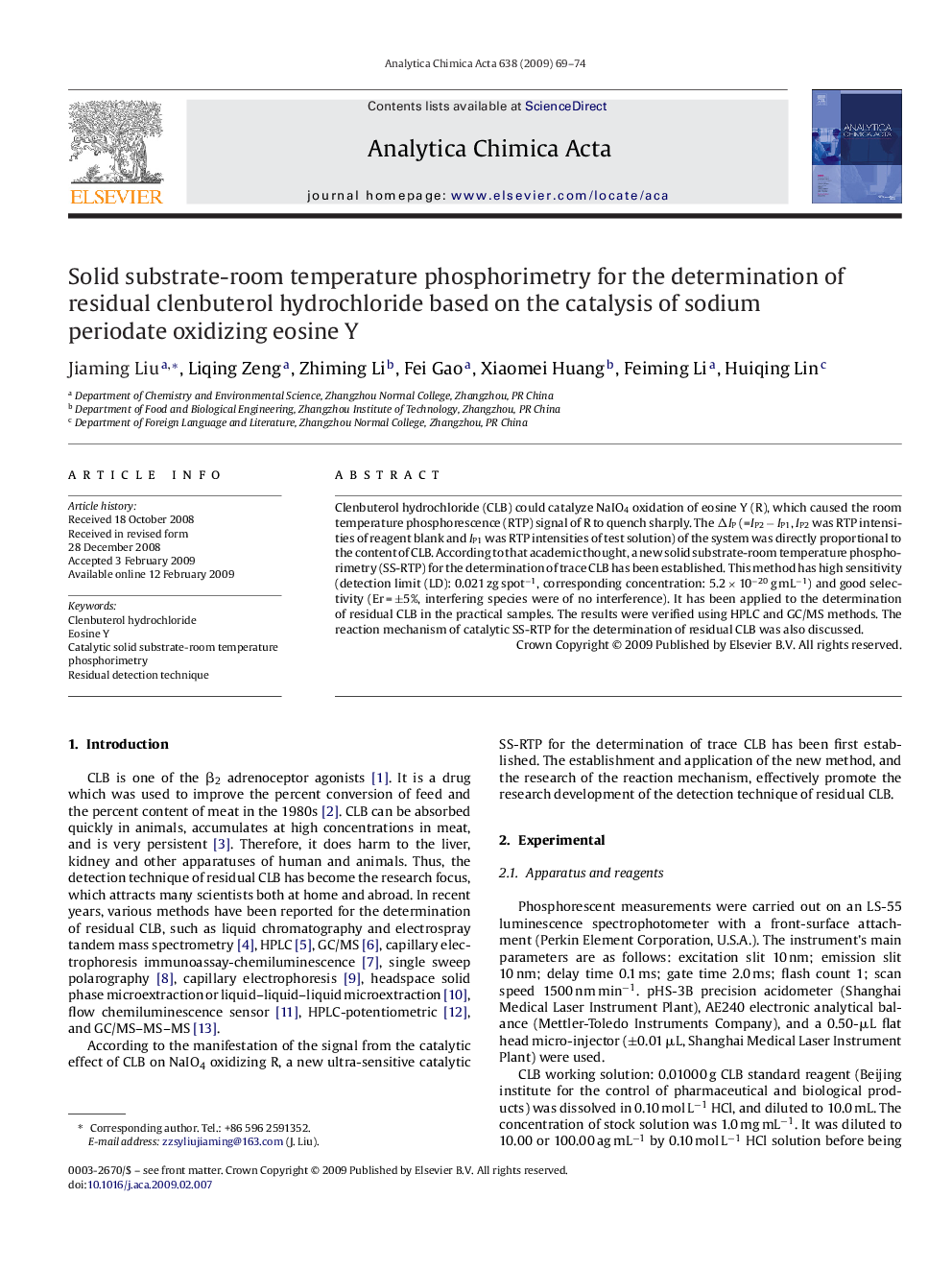| Article ID | Journal | Published Year | Pages | File Type |
|---|---|---|---|---|
| 1168154 | Analytica Chimica Acta | 2009 | 6 Pages |
Clenbuterol hydrochloride (CLB) could catalyze NaIO4 oxidation of eosine Y (R), which caused the room temperature phosphorescence (RTP) signal of R to quench sharply. The ΔIP (=IP2 − IP1, IP2 was RTP intensities of reagent blank and IP1 was RTP intensities of test solution) of the system was directly proportional to the content of CLB. According to that academic thought, a new solid substrate-room temperature phosphorimetry (SS-RTP) for the determination of trace CLB has been established. This method has high sensitivity (detection limit (LD): 0.021 zg spot−1, corresponding concentration: 5.2 × 10−20 g mL−1) and good selectivity (Er = ±5%, interfering species were of no interference). It has been applied to the determination of residual CLB in the practical samples. The results were verified using HPLC and GC/MS methods. The reaction mechanism of catalytic SS-RTP for the determination of residual CLB was also discussed.
